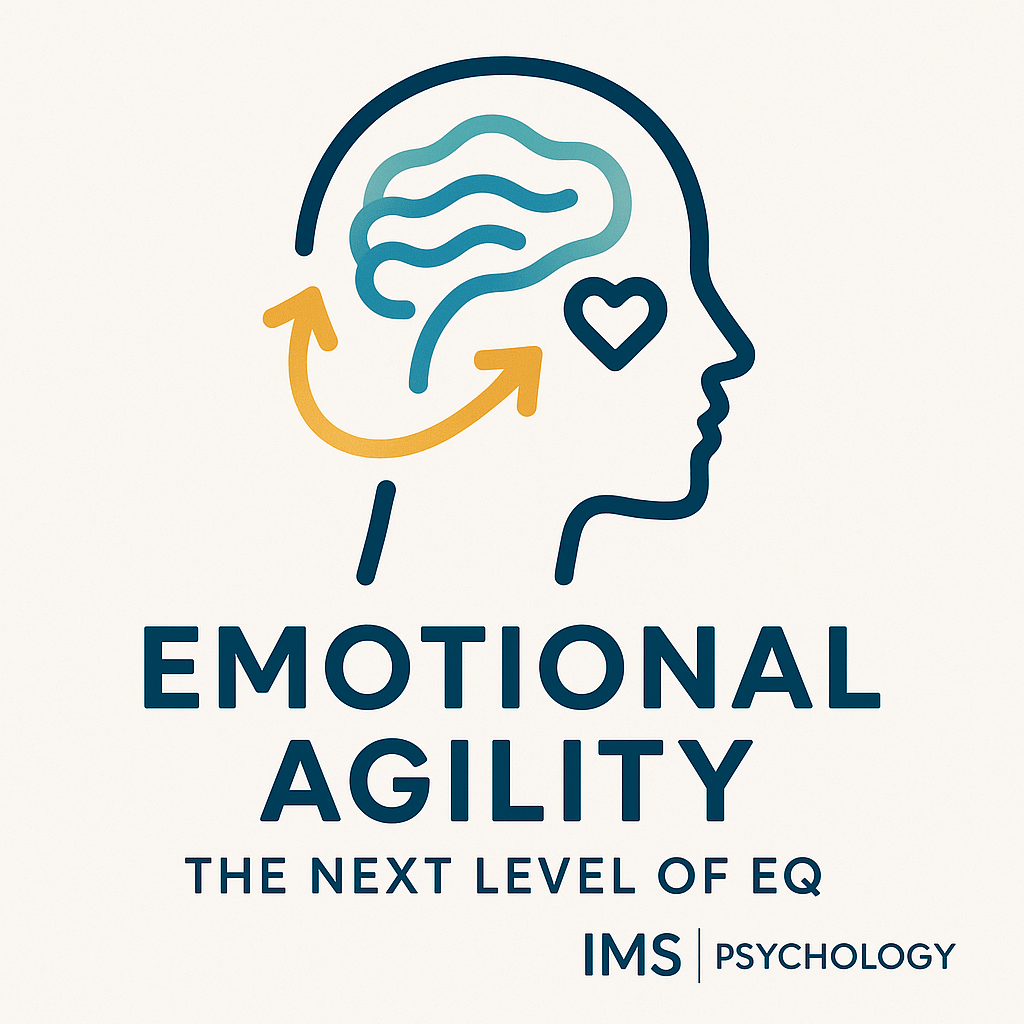
Emotional Agility: The Next Level of EQ
Share
Emotional Agility: The Next Level of EQ
Discover emotional agility — the next level of emotional intelligence. Learn how flexibility with emotions builds resilience, clarity, and growth.
Introduction: Beyond Managing Emotions
Emotional intelligence (EQ) has long been celebrated as a key to success in relationships, work, and personal growth. But researchers now highlight an even deeper skill: emotional agility.
Coined by psychologist Dr. Susan David, emotional agility is the ability to navigate emotions with openness, curiosity, and flexibility — rather than suppressing, denying, or being ruled by them. If EQ is about understanding emotions, emotional agility is about moving with them skillfully.
What Is Emotional Agility?
Emotional agility means noticing your emotions without judgment, stepping back from unhelpful thoughts, and choosing actions that align with your values.
Whereas emotional intelligence emphasizes recognition and regulation, agility goes further:
-
Awareness: Recognizing emotions as they arise.
-
Detachment: Seeing thoughts and feelings as temporary, not absolute truths.
-
Values-based action: Responding in ways aligned with deeper goals and identity.
It’s not about being positive all the time — it’s about being real and adaptable.
Why Emotional Agility Matters
1. Resilience Under Stress
Rigid responses (e.g., “I must not feel anxious”) often backfire. Emotional agility allows you to acknowledge discomfort and still act constructively.
2. Improved Relationships
By pausing before reacting, emotionally agile people listen better, empathize, and respond with clarity instead of reactivity.
3. Leadership & Performance
In workplaces, agility helps leaders balance decisiveness with humility, adapt to feedback, and foster psychological safety.
4. Mental Health Benefits
Suppressing emotions increases anxiety and depression risk. Agility, by contrast, fosters acceptance, reducing emotional burden.
The Psychology Behind Emotional Agility
-
Acceptance & Commitment Therapy (ACT): Teaches detachment from thoughts and alignment with values.
-
Mindfulness: Builds awareness and non-judgmental observation.
-
Cognitive Flexibility: Neuroscience shows flexible thinking enhances problem-solving and stress regulation.
-
Self-Compassion Research: Being kind to yourself supports emotional agility, especially in setbacks.
Four Core Steps to Practice Emotional Agility
1. Show Up to Your Emotions
Acknowledge what you feel without suppressing or exaggerating it. Naming emotions (“I’m feeling frustrated”) reduces their intensity.
2. Step Out
Create space between yourself and your emotions. Instead of saying, “I am anxious,” reframe as “I notice I’m feeling anxious.” This shifts identity from being the emotion to observing it.
3. Walk Your Why
Reconnect with values: “What matters most to me in this situation?” This guides responses aligned with long-term goals rather than short-term reactions.
4. Move On
Take small, values-driven actions. Even imperfect steps build momentum and resilience.
Practical Ways to Build Emotional Agility
-
Journaling: Write about emotions to create perspective.
-
Mindful Pauses: A few deep breaths before reacting give space for choice.
-
Values Mapping: Identify core values and use them as a compass in tough moments.
-
Reframing Self-Talk: Replace “I shouldn’t feel this” with “This feeling is here, and I can still choose how to act.”
-
Experiment with Small Shifts: Try new responses instead of defaulting to old habits.
Emotional Agility in Action: Examples
-
Workplace Feedback: Instead of defensively rejecting criticism, acknowledge discomfort, reflect, and integrate useful insights.
-
Parenting Stress: Rather than snapping at a child, pause, notice your frustration, and respond with guidance instead of punishment.
-
Personal Goals: When motivation dips, recognize discouragement without judgment and return to values (“Why did I start this?”).
Conclusion: From Control to Choice
Emotional agility is not about controlling or avoiding emotions — it’s about moving with them in ways that keep you grounded in your values. It’s the next level of emotional intelligence, helping you respond to life’s challenges with resilience, clarity, and authenticity.
written by,
Martin Rekowski (28.09.2025)
-
External link suggestion: Harvard Business Review – Emotional Agility
- https://hbr.org/search?term=Emotional+Agility